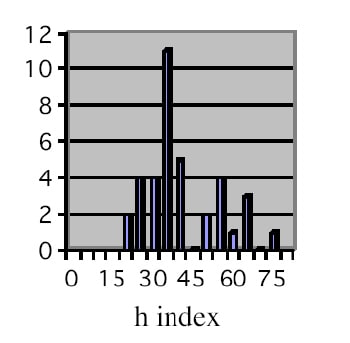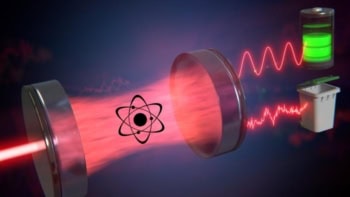A physicist in the US has proposed a new way of quantifying the scientific output of individual scientists. Jorge Hirsch of the University of California at San Diego says that the "h-index" - which is derived from the number of times that papers by the scientist are cited - gives an estimate of the "importance, significance and broad impact of a scientist's cumulative contributions." According to Hirsch the h-index "should provide a useful yardstick to compare different individuals" when recruiting new staff, deciding promotions and awarding grants (physics/0508025).

While the number of papers published by a scientist provides a measure of their productivity, it says nothing about the quality of their work. The number of citations received by a scientist is a better indicator of quality, but co-authoring a handful of articles that are cited widely could “inflate” the reputation of a scientist. Hirsch says that his new approach overcomes these problems. A scientist with a h-index of 10, say, will have published 10 papers that have received at least 10 citations each. The best researchers should therefore have the highest h-indexes.
“A high h is a very accurate indicator of scientific achievement,” says Hirsch. “I have looked at the h-index of many physicists in the subfields I am familiar with and have found that there is a very strong correlation between scientists for whom I have a high regard and their high h.”
Hirsch says that it only takes a few seconds to find the h-index for a scientist – providing they don’t have a common name – on the ISI Web of Knowledge database. For example, the physicist with the highest h-index is the string theorist Edward Witten of the Institute for Advanced Study in Princeton, who has a h-index of 110. This means that Witten has published 110 papers with at least 110 citations each.
Other highly ranked physicists include: Marvin Cohen (94), a condensed matter theorist at the University of California at Berkeley; Philip Anderson (91), a condensed matter theorist at Princeton University; Steven Weinberg (88), a particle theorist at the University of Texas at Austin; and Michael Fisher (88), a mathematical physicist at the University of Maryland (88).
Hirsch, who has a h-index of 49, says that a “successful scientist” will have an index of 20 after 20 years; an “outstanding scientist” will have an index of 40 after 20 years; and a “truly unique individual” will have an index of 60 after 20 years. Moreover, he goes on to propose that a researcher should be promoted to associate professor when they achieve a h-index of around 12, and to full professor when they reach a h about of 18.
However, Hirsch recognizes that the average h-index might be different for different subfields of physics: “One should make sure one knows what the typical values in each subfield are if one is comparing individuals from different subfields,” he says.



